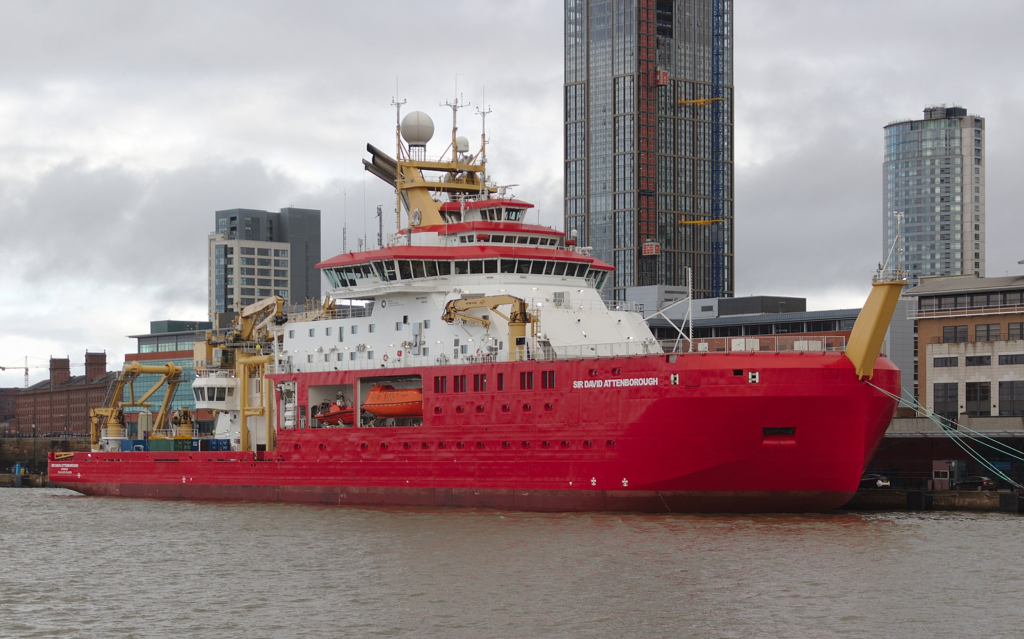You might have heard the “Boaty McBoatface” story: In 2016, there was an online poll to name a new Antarctic research vessel. Members of the public could suggest names and vote for their favourites – and the overwhelming winner was “Boaty McBoatface”.
The Natural Environmental Research Council decided not to go with the popular choice, instead naming it the RSS Sir David Attenborough (4th choice suggestion in the poll). There was a considerable amount of humorous outrage over this, including a petition for Sir David Attenborough to change his name:
Sir David, you are our only hope. We implore you to legally change your name to Sir Boaty McBoatface, so that the research vessel bearing your name will be forced to follow suit.

Tenuous link
I think there’s a lesson to be learned here about … deciding things in workshops. Often, there’s a decision to be made about which ideas to take forward or what course of action a group will choose. The go-to choice for lots of facilitators is dot voting: give everyone a small number of votes, and see which options win. That works great in lots of cases – a democratic way for the group to decide what to do – but not always.
Sometimes, not everyone is equally impacted by a decision:
- Some people might have to do the work, or commit budget, while others are just here to give their perspectives
- You might have representatives from a range of teams, and feel it’s unfair if one team or role is over-represented
- You might have some people with deep expertise on the question at hand, and want to give their opinions more weight than others
For any of these situations, the facilitator needs to think about them and talk through that up front or you’ll fall into the Boaty McBoatface problem. You can do all kinds of things – for example, explain that these dots are to check the view of the room, and the actual decision gets made in another step. This can sometimes be a useful process: if there’s a clear preference in the group, and the “leader” or “decision maker” feels they need to take a different course, talk about the reasons for that. Are there considerations most of the group don’t know about? Can they share information so there’s more of a shared understanding in future?
If you explain the reasoning, both before and after, and give everyone a chance to question and challenge it, this can be a useful exercise. Without those steps, it’ll just feel like votes being ignored.
Things you can’t get away with
You might be tempted to wheel this trick out at every opportunity. Remember, the normal course in workshops is to let the group decide, and to take everyone’s opinions into account – you’ll get a better quality of decisions that way. If you reach for “dot vote then do something else” too often, you may be trying to use workshops in the hope that everyone will come to the conclusion you want, so it feels like a shared decision, but have a fear of doing something different if the group comes up with an answer you didn’t expect. Watch out for this!
Alison Coward has an excellent Great workshops, great teams talk looking at good and bad reasons to run a workshop. If you want to generate ideas, gather information from a range of people, and make decisions: a workshop is a perfect choice. On the other hand, if you already know the answers, or want to inform people of decisions: you probably need something else.
A few more boat facts
The name didn’t get discarded altogether: the RSS Sir David Attenborough carries an autonomous underwater vehicle named Boaty McBoatface.
We know how the name got into that poll: BBC journalist James Hand added it as a joke, then was immediately horrified when it gained thousands of votes. “I’m terribly sorry about all this”, he tweeted.
This boat is far from the only thing that’s been named after Sir David Attenborough: there’s also a building and a wide range of animals, both living and extinct.